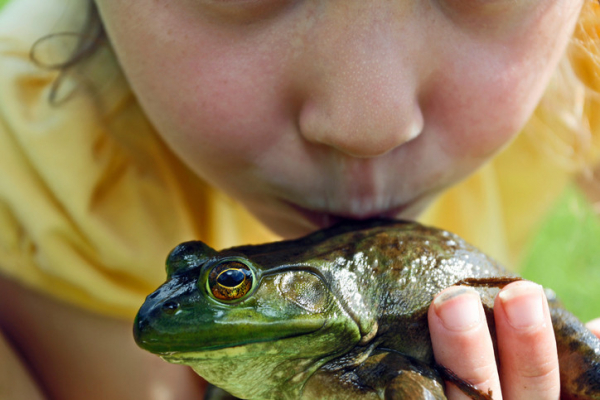
Small animals like turtles, iguanas, and frogs are often chosen as first-time pets for children because they are easy to interact with and low maintenance for busy households. While they can be fun, it may be best to avoid them.
The reason? “Reptiles and amphibians can carry germs that make people sick, the most common of which is the Salmonella bacteria,” says Dr. Elizabeth Hohmann, an infectious disease expert with Harvard-affiliated Massachusetts General Hospital. “These animals live in warm and wet environments where Salmonella thrives.”
Outbreaks of illness across the US
Reptiles and amphibians often carry Salmonella in their digestive tracts, although the bacteria doesn’t affect them. The risk of illness from these pets became so severe this year that the CDC warned about adopting tiny pet turtles after reported outbreaks of Salmonella illnesses and hospitalizations in 24 states. (Other small pets such as mice or hamsters, and farm animals like chickens, may also carry and spread the bacteria.)
How is the bacteria transferred from pets to children and adults?
People become exposed to Salmonella through physical contact with the animals, their droppings, food, items like toys or food dishes, and habitats such as cages, tanks, aquariums, and water.
“They get the bacteria on their hands and then inadvertently touch their mouths or nose,” says Dr. Hohmann. This is especially likely in younger children.
Once exposed to the bacteria, people can get an infection called salmonellosis.
Who is more likely to get sick?
Anyone can get salmonellosis, but children younger than age 5, adults 65 and older, and people with chronic conditions are at higher risk for severe illness and even hospitalization.
“Kids that are very young don’t always follow proper personal hygiene or understand safety protocol when handling these animals,” says Dr. Hohmann. “Older adults and people with chronic conditions like diabetes can have weakened immune systems that make them more susceptible to illnesses.” In the most serious cases, the bacteria can reach the bloodstream and from there infect other places within the body.
What are the symptoms of this infection?
The hallmarks are diarrhea, fever, and abdominal cramps. These symptoms usually appear within six hours to four days after infection and last about four to seven days.
Call your pediatrician or primary care team for advice if you have a pet that potentially carries Salmonella.
When should you seek immediate medical care?
Seek medical care immediately if you or your child have any of these severe symptoms:
- diarrhea and a fever higher than 102° F
- diarrhea for more than three days that is not improving
- bloody diarrhea
- so much vomiting that you cannot keep liquids down
- signs of dehydration such as not urinating much, dry mouth and throat, or feeling dizzy when standing up.
What if you already have a pet turtle?
If you already have a pet turtle or similar high-risk pet, make sure everyone follows these safety steps from the CDC. Children may need frequent reminders about washing hands and playing safely.
Wash hands. Always wash hands for at least 20 seconds with plenty of soap and warm water right after touching or feeding your pet, and after handling or cleaning the area where it lives and roams. “Adults should make sure to teach young children how to wash their hands properly,” says Dr. Hohmann.
Play safely. Don’t kiss or snuggle the pet, and don’t eat or drink around it. Keep it out of the kitchen and other areas where you eat, store, or prepare food.
Properly clean. Use cleaning materials like a wash tub, sponge, and scrub that are reserved only for your pet. Always clean cages, tanks, and other pet items outdoors. Avoid using a kitchen sink, as this can increase the risk of spreading germs to your food.
But perhaps the best safety advice is to simply avoid these animals as pets — or at least wait until your kids are much older, says Dr. Hohmann. “It’s probably safer to stick with dogs and cats.”
About the Author

Matthew Solan, Executive Editor, Harvard Men's Health Watch
Matthew Solan is the executive editor of Harvard Men’s Health Watch. He previously served as executive editor for UCLA Health’s Healthy Years and as a contributor to Duke Medicine’s Health News and Weill Cornell Medical College’s … See Full Bio View all posts by Matthew Solan
About the Reviewer

Howard E. LeWine, MD, Chief Medical Editor, Harvard Health Publishing
Dr. Howard LeWine is a practicing internist at Brigham and Women’s Hospital in Boston, Chief Medical Editor at Harvard Health Publishing, and editor in chief of Harvard Men’s Health Watch. See Full Bio View all posts by Howard E. LeWine, MD





